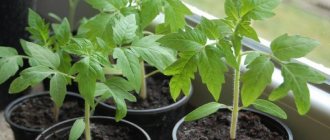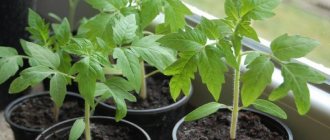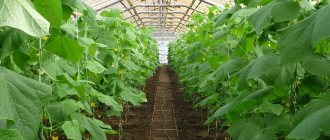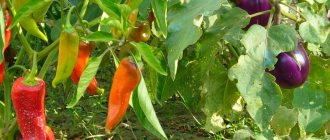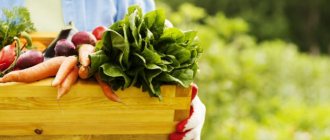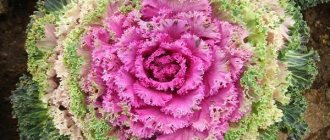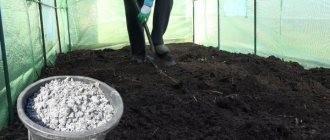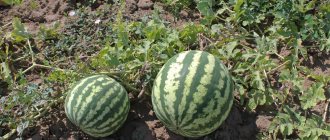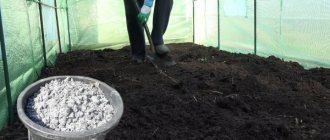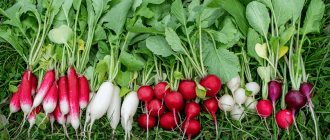General recommendations
To grow a plant in an indoor garden you need:
- Prepare the soil, fertilize, apply phosphorus fertilizer. Then humus in proportions of 10 liters. solution per 1 sq.m.
Manure cannot be used! In pepper it causes a decrease in yield.
- Before planting small seedlings, warm up the greenhouse and the ground using natural heat and heaters.
- Seedlings survive better if the seeds are grown in glasses with peat.
- Peppers in a greenhouse require care. It is important to follow the recommendations for watering, feeding, and seating chart.
Planting peppers in a greenhouse has advantages: the thick walls of an artificial greenhouse protect the seedlings from wind, frost, and excess moisture. Double material scatters light, in this case the sun does not burn the leaves, but evenly illuminates the room.
Preparing pepper seeds for the greenhouse
If the seeds are not processed, then before planting they should first be prepared:
1. First, the seeds need to be checked for germination. They are dipped into a small container with salted water (1 teaspoon of salt per glass of water), those that remain at the bottom are considered viable.
2. Then, for disinfection, the seeds are treated with a 1% manganese solution for 30 minutes; for rapid germination, they are treated with growth stimulants (Epin, Zircon according to instructions, aloe juice). After processing, the seeds must be rinsed in water.
Before planting seeds, it is recommended to let them germinate. To do this, after processing, the seeds are laid out on any material, moistened, covered with film and put in a warm place until germination (not forgetting to moisten).
After the seeds germinate (a small tail appears), they are planted in prepared soil. Seeds can be sown without germination; this procedure is not mandatory.
Varieties
The following types of overseas vegetables are prepared for greenhouse growing conditions:
| Variety | Characteristic |
| Claudio | Ripens 73-76 days after planting, is not susceptible to fungi, tolerates heat and light frosts well. |
| ox ear | Elongated fruit, weight - 120 -140 g. Seedlings are transported without loss of properties. |
| Atlant | A highly fruitful hybrid, the shape of the fruit is conical. Stores well and freezes. |
| Cockatoo | The fruits are large, weighing up to 500 g, and red in color. The height of the bush is about 60 cm. |
| Winnie the Pooh | Not capricious, has good immunity. The fruits are well stored, transported, have excellent taste, and contain vitamin C. |
| Health | Growing and caring for this pepper in a greenhouse is not difficult. It is unpretentious to light and watering. Gives a high yield. |
| California miracle | The fruits ripen within 100 days from the moment the pepper seedlings are transplanted. Vegetable weight up to 140 g. |
| Orange miracle | The color of the fruit is orange and is frost resistant. Used for the seedless method. |
| Hercules | Early ripening, ripening takes 3 months from sowing, the shape of the fruit is cubic, the shade is green, red. |
Temperature
A polycarbonate greenhouse installed in the yard provides the conditions for this due to good light transmission and heat retention inside.
To get a good harvest, you need to maintain the following temperature conditions:
- The temperature for pepper seedlings is not lower than +22°C inside the greenhouse and +14°C on the ground.
- For rapid growth, a temperature of 27-28°C is required.
- Reducing the temperature to the minimum (14-16°C) will not cause the death of seedlings, but will lead to wilting and cessation of growth.
What kind of soil does bell pepper like?
The handsome pepper is picky about the soil. It will not grow in clayey, heavy and acidic soils. But soil that allows air and moisture to pass through well is suitable. The soil should be rich in humus, nutrients, and fertile. The ideal option is loamy soil, light, but not too chernozem. The acidity level should be neutral.
The soil should contain moderate amounts of magnesium, phosphorus, iron, and manganese. All these nutrients are needed for the healthy development of the plant and good fruiting. In addition, pepper does not like cold soil, so the soil temperature should be at least 15 degrees Celsius.
Soil preparation
Planting pepper seedlings in a polycarbonate greenhouse requires soil preparation. The soil is refined in advance, first in the fall, then in the spring. For this:
- They dig it up, saturating it with fertilizers.
Follow the organic dose: 5 kg per 1 sq.m.
- In April-May, the site is dug up a second time and fertilizers are applied.
Add phosphorus and potassium: 40-50 g per 1 sq.m. Or humus.
- Before planting seedlings, the ground is loosened, holes are dug, and filled with water.
Warm up the beds to a minimum temperature of 15-18 °C. Better up to 23-25°C.
Do not forget to ventilate the greenhouse and periodically loosen the soil until the plants take root. This saturates the soil with oxygen and increases disease resistance.
Preparing greenhouse beds for peppers
Because Greenhouse pepper is quite weak in terms of various diseases and pests; it is better to disinfect the soil for the beds in advance, and at the same time – the weed seeds. And prepare it correctly, in compliance with all the rules.
Disinfecting soil for garden beds
Here's what to do:
- Step 1. Defrost the soil and warm it to room temperature.
- Step 2. Remove all the baking sheets from the oven, place a grill rack on the bottom of the oven, and a bucket of soil covered with a lid on top.
- Step 3. Turn on the oven at 90°C. Overnight, all living things in the soil will die, but the organic matter will remain.
- Step 4. In the morning, turn off the oven and open the cabinet door.
If plants in your greenhouse often get sick, also water the holes themselves before planting pepper seedlings with a pink solution of potassium permanganate.
And if the situation with diseases and pests is completely deplorable, then use the modern hydroponics method to grow peppers in a greenhouse:
Adjusting the pH level
But what peppers don’t like is acidic soil - be sure to check the pH before planting, because greenhouse soil can change greatly over the years. A typical situation: they took one substrate, checked it, the peppers grew and pleased the harvest for several years, and then - that’s it - they don’t grow and get sick.
And many people don’t even imagine what this could be connected with, because the varieties are the same, and the agricultural technology is unchanged, but in reality it’s such a subtlety. If you suspect that your soil has become acidic, apply dolomite flour as a fertilizer.
Fertilize with useful microelements
Additionally, add complex fertilizers to such beds - nitroammofoska or nitrophoska, or Kemira. If you are a supporter of natural fertilizers, then use rotted manure - the No. 1 fertilizer for peppers, which are especially responsive to organic matter.
It is only important to distribute the fertilizer as evenly as possible over the surface of the earth and then carefully mix the soil with fertilizers and dolomite flour. But, if the stored organic matter for all this turned out to be not enough, then you can safely add it directly to the holes.
In addition, organic matter for pepper is good because it saturates the soil with useful active bacteria, which release carbon dioxide into the air, which in turn is very important. Ordinary wood ash is also ideal for pepper as a fertilizer.
If your greenhouse peppers were not sick last year, then you can take compost from warm beds after harvesting as fertilizer for planting seedlings in the new season. And an excellent fertilizer.
Warming the soil before planting
Loosen the soil in the beds well and water with hot water. This way you can at least somehow imitate soil from the humid American tropics that is close to the nature of pepper. And, once in their native places, the pepper will begin to grow actively, and the hotter it is, the more active the stem will be forced.
Separately for the peppers, you can prepare a warm bed by laying manure or dry grass to a depth of 20-30 cm in the beds. And in addition, so that the peppers do not fry during the day and do not get cold at night, you can bury the following unusual heat accumulators in the ground:
Disembarkation scheme
To know exactly at what distance you can plant peppers in a greenhouse, you need to follow the bush planting pattern. Gardeners use different methods:
Rassadny
It is considered the most popular and convenient. The distance between rows is 70-60 cm, between seedlings - from 30 to 40 cm. The taller the plant, the more space it needs. As a result, it turns out that for 1 sq.m. will accommodate from 3 to 5 bushes.
The hole is dug deep so that seedlings with a lump of earth can fit into it.
Before planting, pour 1 liter of water into the hole, wait for absorption and place the finished bush in the hole. You can put a piece of peat or humus inside the hole.
Seedless
Seeds are planted in the ground. They first develop a root system. The seeds are pre-soaked in water with fertilizers. Ash, peat, and nitrogen are added to the hole. Maintain sowing density (6 cm by 6 cm) and depth (no more than 1 cm). Shoots will appear in 14 -16 days.
For the seedless method, prepare the soil in advance, in October. Warm the soil to 22 °C.
Bush
This is a method of planting two bushes in one hole. Not suitable for greenhouses and cold climates. Plants become infected with fungi from each other and produce a reduced yield.
How to speed up the growth of seedlings
If for some reason you didn’t have time to sow the seeds, don’t worry! The development of seedlings can be accelerated in the following way:
Seeds are sown later, but from the 20th day after emergence, the plants are placed in a dark place.
Every day at 19-20 hours for two to three weeks, the plantings are shaded with light-proof material (for example, covered with a second box). In this case, the buds are formed not on the 60–65th day, but on the 40–45th day.
So we've made up for lost time!
How to form a bush
Pepper in a greenhouse requires care and proper formation of the bush. This will allow you to achieve a rich harvest. Competent stepsoning occurs according to the following rules:
- Agricultural work is carried out only on bushes that have grown to 25 cm.
- The crown flower (the first one) must be ruthlessly removed. This will help the vegetable develop other shoots.
- Create the skeletal base of the bush.
- To do this, powerful shoots are collected, the rest are pinched and trimmed.
- Skeletal shoots develop and a primrose appears on them. Repeat the pinching procedure again.
- Process the remaining branches using the same method.
- Remove flowers inside the bush. They interfere and reduce productivity.
This method of formation is suitable for tall plants. On low-growing plants, only sluggish, weak shoots and diseased parts need to be removed.
Look at the tips on how to properly plant peppers from Nikolai Petrovich Fursov, candidate of agricultural sciences. Please note that he advises leaving no more than 12-15 fruits on each pepper bush.
Watering
To achieve maximum yield, you need to know how to properly water peppers in a greenhouse. Follow these guidelines:
- Watering the planted bushes is done at the root.
- Do not use rain irrigation. This leads to sterilization of the seedlings.
- During flowering, do not allow the soil to dry out. The buds will wither, the fruits will be thin and small in size.
- Prefer drip irrigation.
- For one bush, increase the amount of water from 1 to 2 liters as it grows.
- Do not water with cold water. It needs to be heated to a temperature comfortable for the plant, 22-24°C.
- Carry out the work in the morning.
- On cool days, water the pepper 2 times a week, on hot days 3-4 times.
- You can add mineral fertilizer to the water 1-2 times a month. This will increase the plant's immunity and productivity.
Automatic irrigation system for polycarbonate greenhouse
Top dressing
Many gardeners wonder what to feed peppers after planting in a greenhouse and during the period of active growth of the bush. There are several stages of introducing fertilizers:
- 3-4 weeks after planting the seedlings in the greenhouse. Superphosphate 5 grams mixed with water 10 liters and urea 10 grams is suitable. Pour 1 liter of solution under each bush.
- During the flowering period. Use a mixture of superphosphate (9-10 grams), potassium sulfate - 3 grams, water - 10 liters. Fertilize each bush with 1 liter of solution.
- Harvesting. Mix phosphorus 1 tsp. and potassium 1 tsp. with 10 liras of water. 1 liter of solution is poured under each root.
Feeding requires a competent approach. Do not use chicken manure or cattle manure. They can burn the root system, disrupt metabolism, which will lead to a decrease in yield and leaf growth.
Everything you need to know about seedlings and their planting
Growing seedlings for a greenhouse
Seedlings are planted in an unheated greenhouse at the end of May (middle zone), in a heated greenhouse - from mid-April. More exact dates depend on the weather. Seeds begin to be sown for seedlings in February and finished in mid-March. Age of seedlings before planting in a greenhouse: 50 days when grown without picking, 60 days - with picking.
For seedlings you will need:
- transparent plastic container with a lid;
- priming;
- containers with a diameter of 4 cm;
- 60 W fluorescent lamp.
Take purchased soil, for reliability, buy two types from different manufacturers, mix in a 50:50 ratio, pour into a container with a layer of 7 cm. Pour the substrate with warm water and potassium permanganate and leave for 12 hours in a warm place.
It is important to illuminate the seedlings for 12 hours throughout February and March - from 7 am to 7 pm. The distance from the lamp to the seedlings is no more than 15 cm. After 19 hours, cover the seedlings from light, since the crop needs a short daylight hours.
Sow the seeds in increments of 2 cm in a row, 4 cm between rows, sprinkle with soil (1 cm), sprinkle the surface with water from a sprayer. Close the container and open it in the morning and evening for ventilation.
The best temperature for seed germination is 28° C, the seeds germinate in 7 days. Plant the seedlings in separate pots at the 3-leaf stage (ignore the cotyledon leaves).
How to choose strong seedlings
Not all summer residents grow seedlings. It is important to know how to choose healthy seedlings in the market (in the store). First of all, we evaluate the height of the plant. The growth of healthy seedlings at the age of 50-60 days is 25-30 cm. By this time, the bush should have from 7 to 12 leaves.
Overgrown seedlings take root more difficult and later begin to bear fruit. The brownish color of the roots is a sign of overexposed seedlings.
The dark green color of the leaves without signs of pests and the budding buds indicate healthy, hardened seedlings, ready for transplanting into the greenhouse.
Preparing seedlings for planting
During transplantation, the plant experiences stress. Proper preparation of seedlings helps reduce it. Hardening of seedlings is a key point; it begins two weeks before planting in the greenhouse. The seedlings begin to be taken outside during the day. The first days for a short period of time from 20 to 30 minutes, by the end of the second week - for the whole day.
The day before planting, water the seedlings and be sure to treat them with a growth stimulator, any will do: “Energen”, “Epin”, “Narcissus-V”. The treatment will not only reduce the stress of replanting, but will also increase the plant’s immunity and serve as protection against diseases.
Preparing the soil in the greenhouse
In the fall, preparations for the greenhouse begin. First, they remove the plant debris that has accumulated over the summer, then begin the labor-intensive process of preparing the soil:
- a 5-10 cm layer of soil is removed and removed from the greenhouse;
- the soil is dug up onto the bayonet of a shovel;
- a solution of Bordeaux mixture is prepared (1.5 g is enough for 1 liter), and the solution is poured over the dug up soil;
- new soil is brought into the greenhouse, enriched with humus (10 kg per sq. m), compost, river sand, and rotted sawdust;
- lime is added to acidic (pH below 5.5) soil at the rate of 300 g per square meter. m, the soil in the greenhouse is dug up deeply;
- In winter, cover the soil in the greenhouse with snow.
In the spring, as soon as the soil in the greenhouse thaws, continue preparation. Dig up the soil again, add a glass of ash per unit area, 2 tbsp. l phosphorus fertilizer (superphosphate), 1 tbsp. l potassium (potassium sulfate). 10-14 days before planting, water the soil with Fitosporin-M solution.
Planting pepper seedlings
Planting scheme - the number of plants per square meter is determined based on the variety. Tall varieties - up to 5 roots per square meter, low-growing varieties can be planted up to 8 roots per square meter. There is no need to deepen or hill up the bushes.
Deepening and hilling will not only not benefit the young plant, they will significantly slow down its development.
Be sure to remove the first few buds (2-3) from seedlings, while the young seedlings will switch to forming roots.
Proper care
Caring for greenhouse peppers is easy if you know the rules and features of care.
- Place the seedlings comfortably. Closely planted seedlings will not give a good harvest due to lack of space for the fruits and root system.
- Plant the seedlings together with peat from a cup.
- Loosen the soil 2-3 cm deep more often. Pepper loves oxygen and fresh air.
- The soil should be moist.
- Maintain a microclimate in the greenhouse of 22°C during the flowering period, 25-27°C during fruit ripening.
- Provide seedlings with plenty of light.
- Do not plant peppers in cold soil. He will die.
- Periodically inspect the leaves for beetles and parasites.
- Use fertilizer in moderation, observing proportions.
- Form the bushes in the morning so that the skeleton has time to recover.
- Tie up the bushes before the fruits begin to appear.
- Remove all limp, diseased leaves and fruits from the bush.
- Remove ripe peppercorns in a timely manner so as not to weigh down the stem.
Planting pepper
Varieties and hybrids should be planted in a prepared greenhouse when the temperature reaches the required minimum. If the air warms up to less than 15° C, the pepper will stop developing. At 30-35° (depending on the variety), the pollen becomes sterile, the ovaries do not form, and the flowers fall off unfertilized.
Ideally, by the time of transplantation into the greenhouse, seedlings planted in common containers should have 6-8 true leaves - this will make it easier for them to take root. When grown in individual cups, it can be much larger - reach 15-20 cm in height and bloom.
To plant peppers, choose a cloudy day, or start work in the evening:
- Dig holes of such a size that a lump of earth can freely fit in them.
- If the bed has not been completely fertilized, add a tablespoon of complex fertilizer and ash to the bottom and mix with the substrate.
- Fill the holes with water. Allow moisture to be absorbed.
- Take the seedlings out of the container. It must be replanted in such a way as not to destroy the earthen lump.
- Fill the hole and tamp it lightly.
- Water generously.
Peppers should not be buried, even if the seedlings are overgrown. The maximum that can be done is to dig the stem up to the cotyledon leaves, but only if it has not yet become woody.
Compatibility with other crops
Gardeners often ask the question: “Is it possible to plant several crops in one greenhouse? For example, tomatoes and peppers, cucumbers and bell peppers?” These crops are heat-loving, but their compatibility also depends on other growing conditions.
- Do not plant bell peppers in the greenhouse with hot chilies at the same time. The seedlings are pollinated.
- Planting cucumbers and peppers in the same greenhouse is not the best option for experienced gardeners. Cucumbers do not require ventilation, but peppers love fresh air. Cucumbers require heat, while peppers require moderate, constant temperatures.
- Tomatoes and peppers don't get along well together. They need different conditions in the greenhouse. Sweet vegetables need moisture, and tomatoes die from water.
Thus, it is better to plant crops in different parts of a large greenhouse or arrange an individual greenhouse for each.
Diseases
A thorough analysis of the greenhouse microclimate and an external inspection will help you find out why peppers grow poorly in a greenhouse and why they turn yellow. Most often, fungi and infections affect plants that are in a poorly ventilated area or flooded with water.
The main diseases of peppers are:
- Mosaic. Leaves lose transpiration and yields decrease.
- White rot. Plaque forms on the root part, the death of seedlings occurs in 3-4 days. The reason is high humidity, rare ventilation of the greenhouse.
- Late blight. Holes appear on the leaves, dark purple spots on the fruits and crown. The culprit is considered to be a cold snap at night and excess moisture.
- Black spot. The leaves and peppercorns become covered with tubercles, which turn black, causing the death of the plant.
They fight infections by sprinkling the damaged areas with charcoal or chalk. It is important to establish an irrigation regime and constantly maintain a comfortable atmosphere inside the greenhouse. Immediately remove diseased bushes away from healthy ones, and don’t hesitate to throw them away. This will help keep yields high.
Caring for pepper seedlings in a greenhouse
Further care consists of the formation of pepper bushes, watering, loosening, fertilizing and timely treatment of the bushes from pests and diseases.
Air temperature
The air temperature must be maintained at 20-26°C during the day and 16-19°C at night; during fruiting it is also advisable to keep it closer to a minimum. Overheating the air in the greenhouse leads to the dropping of flowers and ovaries from peppers.
Ventilation
In hot weather, greenhouses should be ventilated daily (2-3 hours during the day). This is done in order to reduce the air temperature. It is best if the greenhouse where the peppers will grow is equipped with windows, but if there are none, then when ventilating, you need to open the greenhouse doors only on one side, because peppers do not tolerate drafts.
Watering the pepper
Peppers should be watered regularly, every 3-4 days (1-2 liters per plant), since peppers have a small root system. Water the peppers with warm, settled water (25°C) before flowering using the sprinkling method, and then only at the root. When the pepper bushes grow, the volume of water is increased.
The optimal soil moisture should be 85%. Overwatering also negatively affects the development of peppers.
After watering, it is recommended to slightly loosen the ground under the peppers, or you can mulch with covering material or mown grass (straw, etc.), moisture will not evaporate from the soil, and this will help reduce the frequency of watering.
